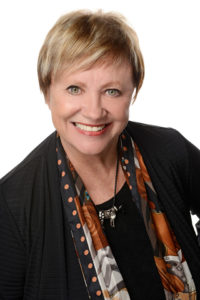 Ronnie Bray, founding principal of Bray Whaler, participated in the NEWH Leadership Conference 2017 Industry Outlook Panel in Denver last weekend. The panel, moderated by Meg Prendergast of The Gettys Group, included Meghann Day, Hirsch Bedner Associates, Bill Langmade, Purchasing Management International, Joe Khairalla of Marcus Hotels and Steve Reiswig of BRE Select Hotels. An industry outlook was provided by Andrea Grigg of Jones Lang LaSalle.
Ronnie Bray, founding principal of Bray Whaler, participated in the NEWH Leadership Conference 2017 Industry Outlook Panel in Denver last weekend. The panel, moderated by Meg Prendergast of The Gettys Group, included Meghann Day, Hirsch Bedner Associates, Bill Langmade, Purchasing Management International, Joe Khairalla of Marcus Hotels and Steve Reiswig of BRE Select Hotels. An industry outlook was provided by Andrea Grigg of Jones Lang LaSalle.
One of the many topics covered by the panel is how the proliferation of soft brands and independent hotels is impacting the industry– especially in brand saturated urban markets. It is increasingly challenging for brands to differentiate themselves and create relevance across the various customer segments from millennials and boomers, to bread-and-butter corporate travelers and groups.
Now more than ever, design drives differentiation. This is upping the game for designers and changing the role of purchasing agents. Designers are increasingly tasked with incorporating the history, character and vibe of the location into the FF&E package to create a one-of-a-kind guest experience.
Ronnie explains it this way, “In the bygone days of brand standardization, choices were limited. Clients would hire us because we could think outside of the box. Now, there is no box! As hotels strive to differentiate amidst brand saturation, owners push designers for innovation like never before. They look to purchasing agents as advisers and consultants to minimize the risk inherent in custom design. Great design is a waste if the product can’t stand the test of time, and meet standards of durability and appropriateness for hospitality.
Our product knowledge must be both broad and deep. To accomplish this, our entire team meets with vendors several times a week; and a Bray Whaler principal attends every model room. We feel this type of ongoing training down to the project coordinator level is critical for success. As purchasing agents, we have to be able to bridge the gap between design – budget – durability – and schedule. Schedule is always a challenge. Owners’ schedules are getting shorter, while manufacturing lead times are lengthening due to the robust pipeline, full of both renovation and new development projects.”
Andrea Griggs of Jones Lang LaSalle painted a picture of cautious optimism for the U.S. lodging market in 2017, with a modest 2.3% projected increase in RevPar, driven primarily by gains in average daily rate. Increasing supply is putting downward pressure on occupancy forecasts. According to Griggs, the U.S. lodging market is still considered a favorable haven for offshore investors. Mainland Chinese buyers invested $9 billion in U.S. hotels in 2016. Middle Eastern investors were less active in 2016, and European investors were more so, investing $1 billion across the country last year. Offshore investors are expected to remain active and begin to diversify into secondary markets. Operators wait to see how legislation will affect the cost of wages, benefits and taxation.
All panelists agreed that uncertainty in the geopolitical arena directly affects hospitality, not only from an overall economic perspective, but also as it impacts tourism, tariffs and availability of capital. Stay tuned for Ronnie’s thoughts on how this may all play out in FF&E pricing as the year progresses.